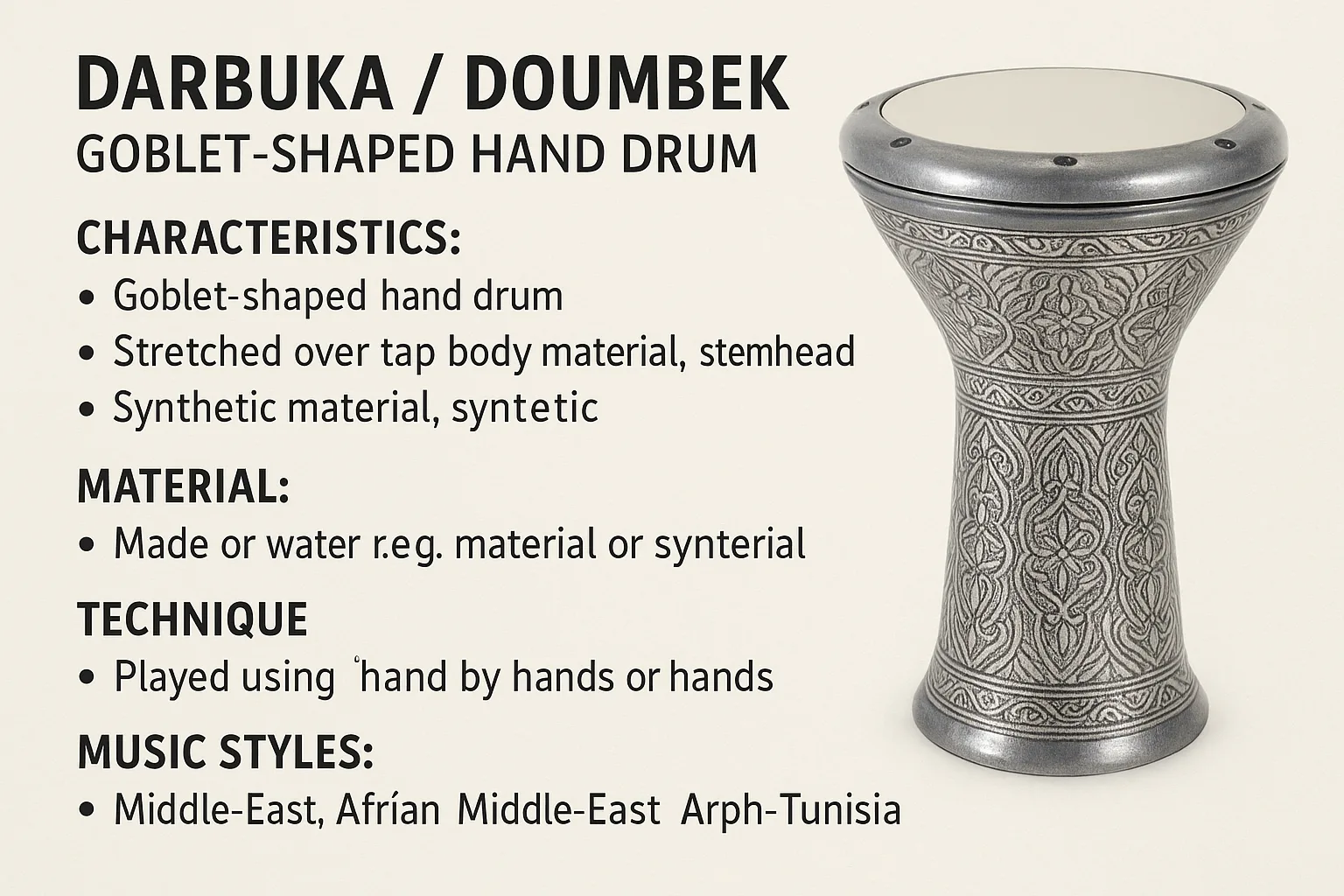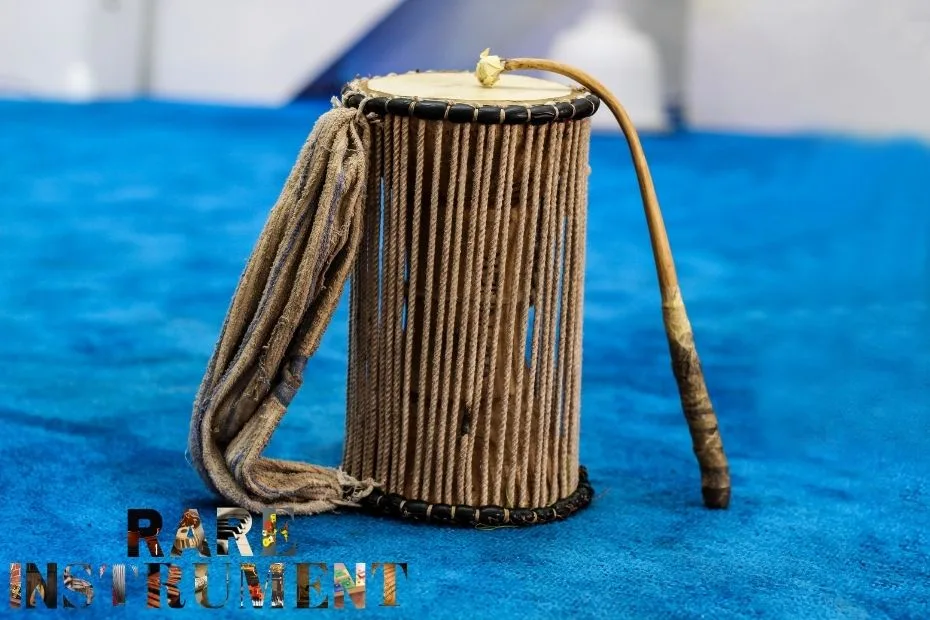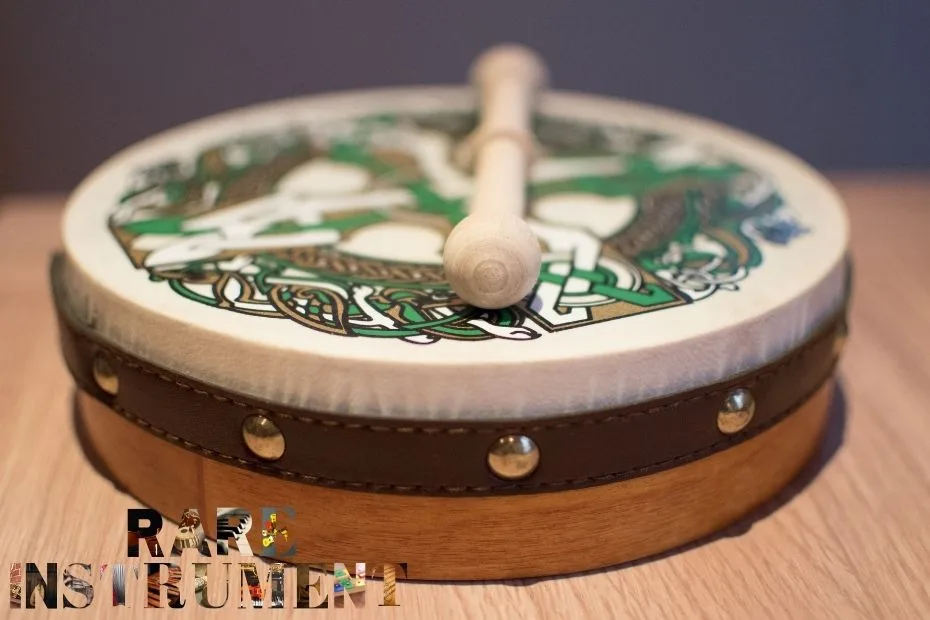The Doumbek, also known as the Goblet Drum, is a captivating percussion instrument with origins in the Middle East and North Africa. Renowned for its crisp tones and versatile rhythms, the doumbek is a favorite in traditional, contemporary, and fusion music. Whether you are a beginner or an advanced percussionist, mastering its techniques, maintenance, and accessories is key to achieving its full potential.

1. Doumbek Overview
The doumbek is a goblet-shaped drum typically played with the hands. Its unique shape allows for three main tones: Dum (bass), Tek (high), and Ka (slap). Players use a combination of fingers and palms to produce dynamic and rhythmic patterns. Modern doumbeks may feature traditional natural skin heads or synthetic heads for enhanced durability and consistency.
2. Doumbek Types and Materials
| Feature | Traditional Doumbek | Synthetic Doumbek | Hybrid / Electronic Doumbek |
|---|---|---|---|
| Material | Mahogany / Maple wood, goat skin head | Fiberglass / PVC, synthetic head | Wood body with electronic triggers |
| Diameter | 8–10 inches | 8–10 inches | 8–10 inches |
| Height | 15–18 inches | 16–18 inches | 16–18 inches |
| Weight | 4–5 kg | 3–4 kg | 4–5 kg |
| Tone Characteristics | Dum: deep bass, Tek: crisp high, Ka: sharp slap | Balanced and consistent tone, slightly less resonant | Acoustic + electronic sounds with customizable triggers |
| Snare / Wire | Optional internal snare wires for crisp sound | Integrated synthetic snares or none | Electronic triggers, optional acoustic snares |
| Origin | Middle East / North Africa | Modern global production | Modern global production |
| Price Range | $150–$400 | $100–$250 | $300–$600 |
| Typical Use | Live performance, studio, traditional music | Outdoor events, school bands, street music | Studio, live electronic fusion, recording |
| Recommended Genre | Middle Eastern, Folk, Belly Dance | Fusion, Pop, Contemporary | Electronic, Fusion, Pop |
| Durability | Moderate – sensitive to humidity | High – weather resistant | Moderate – needs electronic care |
| Frequency Range (Hz) | Dum: 80–150 Hz, Tek: 800–1500 Hz, Ka: 1000–2000 Hz | Dum: 90–160 Hz, Tek: 850–1450 Hz | Customizable via electronic triggers |
| Accessories | Bag, drum mat, tuning wrench, cleaning cloth | Bag, mat, light tuning tools | Electronic interface, cables, mats, bag |
| Historical Notes | Used in Middle Eastern ceremonies for centuries | Modern reinterpretation, influenced by global music | Designed for contemporary studio and live performances |
3. Basic Playing Techniques
Mastering the basic strokes is essential for achieving clear and dynamic sounds:
- Dum: Played with the full palm on the center of the drum for a deep bass tone.
- Tek: Strike the edge with fingertips to create a crisp high sound.
- Ka: A slapping motion using fingertips to produce sharp, staccato accents.
- Rolls & Combos: Mix Dum, Tek, and Ka in sequences to form complex rhythmic patterns.
4. Tuning Your Doumbek
Most traditional doumbeks have adjustable tuning systems. Proper tuning ensures each tone is balanced and resonant:
- Locate tuning bolts: Usually on the side or bottom of the drum.
- Adjust gradually: Tighten or loosen slightly to balance Dum and Tek tones.
- Test frequently: Tap different areas and fine-tune as needed.

5. Maintenance and Care
Proper care preserves both sound quality and longevity:
- Keep dry: Avoid moisture and extreme humidity.
- Avoid direct sunlight: Prevent warping or cracking of wood or synthetic heads.
- Clean gently: Wipe with a soft, dry cloth; use mild cleaner if necessary.
- Store properly: Use padded bags or stands to protect the drum.
6. Accessories for Your Doumbek
- Doumbek Bag: Padded protection for transport.
- Drum Stand: For stable playing in live performances.
- Tuning Tools: Wrenches or keys to adjust tension rods.
- Mallets/Brushes: Optional for softer or experimental sounds.
7. Common Mistakes to Avoid
- Over-tightening the drumhead, which can damage the skin.
- Using harsh chemicals on wood or synthetic surfaces.
- Ignoring small cracks or loose hardware.
- Incorrect hand placement causing uneven tones or strain.
8. Advanced Techniques
- Combining Dum, Tek, and Ka for polyrhythms.
- Using finger rolls and slap variations for dynamic expression.
- Syncing with other percussion instruments for ensemble performance.
- Experimenting with hybrid electronic doumbeks to expand tonal possibilities.

9. When to Consult a Professional
If your doumbek exhibits unusual buzzing, cracks, or tuning problems, consult a professional drum technician. Early intervention prevents long-term damage and ensures optimal sound quality.
10. Conclusion
With consistent practice, proper care, and the right accessories, your doumbek (goblet drum) can deliver years of rich, expressive rhythms. Understanding each tone, tuning system, and maintenance routine allows you to fully explore its musical potential, whether in traditional, contemporary, or fusion settings.
FAQ
Q: What is a doumbek?
A doumbek, or goblet drum, is a hand-played percussion instrument known for its distinct Dum, Tek, and Ka tones, originating from the Middle East and North Africa.
Q: How do I tune my doumbek?
Most doumbeks have tuning bolts. Adjust them gradually, testing Dum and Tek tones frequently to achieve a balanced sound.
Q: How should I maintain my doumbek?
Keep it dry, avoid direct sunlight, clean gently with soft cloths, and store in padded bags or stands to prolong its life.
Q: What accessories are recommended?
Essential accessories include a padded doumbek bag, drum stand, tuning tools, and optional mallets or brushes for varied sounds.
Q: When should I consult a professional?
If you notice buzzing sounds, cracks, or persistent tuning issues, a professional drum technician should inspect your doumbek to prevent long-term damage.
References:



